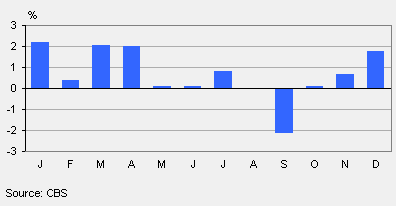Shares thrive in spring

An old saying runs as follows: ‘Sell in May and go away, but remember come back in September.’ This well-known proposition suggests that share prices follow a specific pattern throughout the year.
Average return on shares

First six months more profitable
Over the past 57 years, there have indeed been large differences in share prices between the first and latter half of the year. Over the first half of the year, share prices increased by an average of more than 7 percent versus an average increase by only 1.5 percent in the latter half. The difference is even more astonishing since the total amount paid in dividends is higher in the first six months of the year.
This seasonal pattern has been remarkably stable throughout the years. Save in the 1960s, the last five decades of the past century have shown substantially higher share prices in the first half of each year than in the latter half.
So far, the 21st century has not been very profitable for investors. Until 2000, share prices had risen continually. At the beginning of the third millennium, they began to fall as a result of the Internet bubble and the global economic crisis. Since 2000, the average return on shares has been negative in both the first and latter half of the year. The loss in the latter half of the year was on average 2 percent higher than over the first six months.
Average monthly return on shares, 1953–2009

January most profitable
January is the best month for investors in shares. The increase in share prices averaged 2.2 percent over the 57 Januaries that elapsed since 1953. In March and April, share prices also rose by more than 2 percent on average (despite the dividend payments made in these months). September is the only month to show an average decline in share prices by 2 percent over the entire period 1953–2009.
These analyses show that the old saying quoted above requires some adjustment. The end of July is the best time to sell shares and early October appears to be the best time to buy shares. Investors who had observed this pattern had on average made an extra profit of more than 2 percent. However, positive results gained in the past do not guarantee returns in the future.
Jos van Heiningen